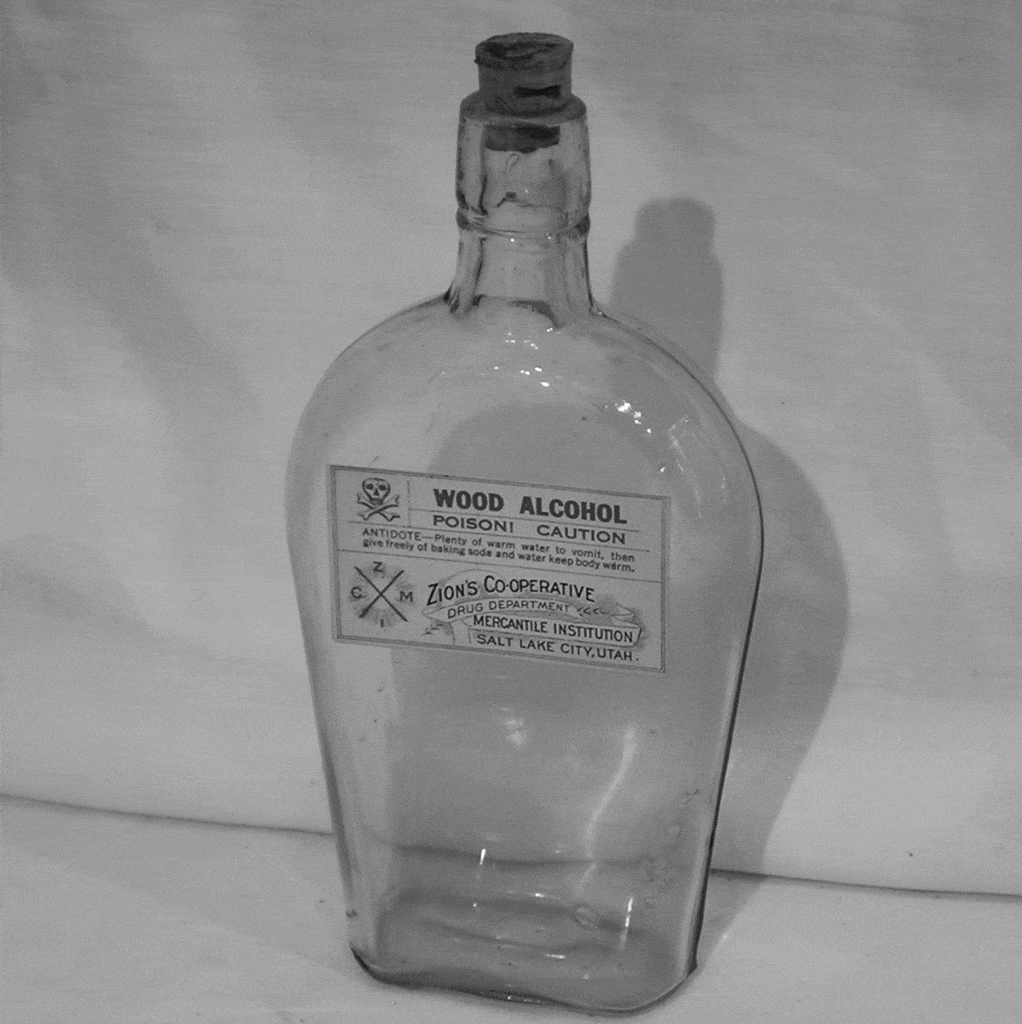We might imagine the “Roaring ‘20s” and Prohibition as a time of excess and excitement. However, the 18th Amendment also ushered in a dangerous time, and it wasn’t just the gangsters people had to worry about. A bad batch of booze could blind or kill in the blink of an eye.
When the government banned the manufacture, sale and transportation of liquor, production of potable alcohol went underground and became unregulated. Industrial alcohol was still legal, however, and some exploited this loophole.
Industrial alcohol was undrinkable due to additions of “denaturants” – toxic chemicals like methyl (wood) alcohol, iodine or formaldehyde. Bootleggers would redistill the alcohol, producing cheap, allegedly consumable moonshine for thirsty masses. However, their process rarely removed all denaturants, and even a small amount of chemicals could be deadly.
Park City was not immune to the effects of poisoned liquor.

Credit: Park City Historical Society & Museum, Smith and Brim Collection
In the early days of 1925, Samuel Owen Apanalp and John Pezely, both miners, died after celebrating Christmas with tainted whiskey.
In April 1925, a man consumed “fighting whiskey” at a soft drink parlor. He was arrested and attempted suicide while in the city jail. He survived and soon after, his brother, suffering from “delirium tremens” induced by tainted alcohol, joined him in jail. Together they wrenched loose wainscoting, molding and water pipes before being removed to separate cells.
A terrifying report from 1927 proclaimed that Miss Lillian Courtney, aged 23, took one sip from her boyfriend’s flask and ran into the street screaming that she was blind. The booze had been tainted with wood alcohol. A 1923 report in the Park Record had claimed that wood alcohol blinded 500 people the previous year, but the warning had failed to resonate and did not protect Miss Courtney from the same fate.
Attitudes were mixed when it came to these incidents. Some believed that drinking bootleggers’ booze amounted to attempted suicide. The Park Record quipped in 1920, “If a toper wants to die, [wood alcohol] is a quick and effective method and he’s sure to receive a ‘mention’ in the press.”
Some had no sympathy, calling those who died from toxic drinks “fools” who got what they deserved. Others blamed deaths on the bootleggers themselves. Wayne B. Wheeler, chief lobbyist for the Anti-Saloon League, proclaimed, “All denatured alcohol containing poison is labeled poison. The bootlegger who takes that label off and substitutes his fake label is as guilty of murder as the man who would sell arsenic as sugar.”
Despite the dangers, people still drank. Prohibition was ultimately repealed, but not before at least 10,000 people had died from tainted liquor.
The Park City Museum’s current traveling exhibit, “Spirited: Prohibition in America” further explores this and related topics and is in town for just one more week, so come visit! Located at 528 Main Street, we’re open 11 a.m.-6 p.m. Monday-Thursday, and 12-6 p.m. Sunday.